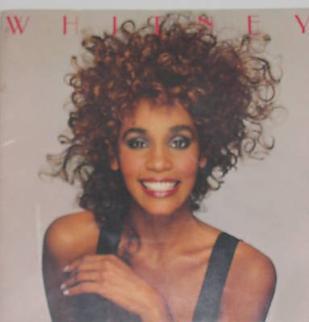The Grammy Award for Best Female R&B Vocal Performance was an honor presented at the Grammy Awards, a ceremony established in 1958 and originally called the Gramophone Awards, to female recording artists for quality R&B songs. Awards in several categories are distributed annually by the National Academy of Recording Arts and Sciences of the United States to "honor artistic achievement, technical proficiency and overall excellence in the recording industry, without regard to album sales or chart position."
Artisan Entertainment was an American film studio and home video company. It was considered one of the largest mini-major film studios until it was purchased by later mini-major film studio Lions Gate Entertainment in 2003. At the time of its acquisition, Artisan had a library of thousands of films developed through acquisition, original production, and production and distribution agreements. Its headquarters and private screening room were located in Santa Monica, California. It also had an office in Tribeca in Manhattan, New York.
Candid Records was a jazz record label first established in New York City.

Family Home Entertainment (FHE) was an American home video company founded in 1980 by Noel C. Bloom. It was a division of International Video Entertainment, which had its headquarters in Newbury Park, California.

Magnetic Video Corporation was a home video/home audio duplication service that operated between 1968 and 1982.

Vestron Video was the main subsidiary of Vestron, Inc., a home video company based in Stamford, Connecticut, that was active from 1981 to 1993, and is considered to have been a pioneer in the home video market.
Sterling Entertainment Group was an American independent entertainment company founded in 1984 as a small local company originally located in Nashville, Tennessee, then, from late 1986, Charlotte, North Carolina. Its headquarters would later relocate to a new location found in Carolina's South in 1996: Fort Mill. UAV was the longtime competitor of GoodTimes Entertainment, Anchor Bay Entertainment and Celebrity Home Video and many other sell-through discount home entertainment companies.

"Change the World" is a song written by Tommy Sims, Gordon Kennedy, and Wayne Kirkpatrick and recorded by country music artist Wynonna Judd. A later version was recorded by English singer Eric Clapton for the soundtrack of the 1996 film Phenomenon. Clapton's version was produced by R&B record producer Kenneth "Babyface" Edmonds.

A New Day... was the first concert residency performed by Canadian singer Celine Dion in The Colosseum at Caesars Palace in Las Vegas, Nevada, United States. It was created and directed by Franco Dragone to support her seventh English-language and eighteenth studio album A New Day Has Come (2002). The show premiered on 25 March 2003 and ended on 15 December 2007.

Cartrivision is an analog videocassette format introduced in 1972, and the first format to offer feature films for consumer rental.

Cher was the second concert residency by American singer-actress Cher at Caesars Palace in Las Vegas, Nevada. For the three-year engagement, Cher received $60 million. Performing at The Colosseum at Caesars Palace, the first show occurred on May 6, 2008 and the last show was on February 5, 2011. The show included 14 dancers and four aerialists, with a total of 17 costumes designed by Bob Mackie. The residency grossed over $97 million during its three-year run.

Andre Blay was an American businessman, film producer, and studio executive.

The Moment of Truth World Tour was the second worldwide tour by American recording artist Whitney Houston and supported her multi-platinum hit album Whitney. The trek started on July 4, 1987 in North America and continued overseas during 1988 in Europe, Asia and Australia.

Home video is recorded media sold or rented for home viewing. The term originates from the VHS and Betamax era, when the predominant medium was videotapes, but has carried over to optical disc formats such as DVD and Blu-ray. In a different usage, "home video" refers to amateur video recordings, also known as home movies.

"Indo Smoke" is a song and a debut single by American rapper Mista Grimm. It was released on June 8, 1993 through Epic Soundtrax as the second single from Music from the Motion Picture Poetic Justice. Production was handled by Warren G, who also provided uncredited vocal appearances together with Nate Dogg.

The videography of American recording artist Whitney Houston, nicknamed “The Voice”, consists of fifty-five music videos, four music video compilations, a concert tour video and three music video singles. In 1983, Houston signed a recording contract with Arista Records and two years later released her eponymous debut album. Houston's first music video was for the single "You Give Good Love", which was selected to establish her in the black marketplace first. Houston then released the video of her worldwide hit "Saving All My Love for You". The following video, for the song "How Will I Know", helped introduce the singer to a wider audience when it became one of the first videos by a black female singer to earn heavy rotation on MTV, and it won MTV Video Music Award for Best Female Video at its 3rd ceremony of 1986. "Greatest Love of All", the final single released from Houston's debut album, helped cement the M.O. for the classic Whitney video. In June 1986, Houston released her first video compilation The No. 1 Video Hits, containing her four music videos off the Whitney Houston album. It reached number-one on the Billboard Top Music Videocassettes chart and stayed there for 22 weeks, which remains the all-time record for a video collection by a female artist, it was also certified Platinum for shipments of 100,000 units by the Recording Industry Association of America (RIAA) on July 15, 1986. In 1987, Houston released the music video for "I Wanna Dance with Somebody ", the first single from her second album Whitney (1987), which depicts Houston in one of her iconic looks, the clip―towering curly wig, colorful dangly earrings and a series of going-to-the-club outfits. In 1988, the music video for the song "One Moment in Time", the title track off the 1988 Summer Olympics Album: One Moment in Time, was released.
Zakiya A. Munnerlyn is a former American R&B/soul singer who released a self-titled studio album on DV8 Records in 1997. Two singles from the album, "Love Like Mine" and "My Love Won't Fade Away", entered Billboard's Hot R&B/Hip-Hop Songs chart.

The English singer Eric Clapton has released 22 video albums and concert films as well as 17 music videos. His commercially most successful video releases are the DVDs of his Crossroads Guitar Festival series. His 2007 release sold over two million DVD and Blu-rays to date, making it one of the best-selling music video DVDs ever to be released. The 2004 Crossroads Guitar Festival DVD was certified 10-times Platinum by the Recording Industry Association of America. Clapton's video releases are popular all over the world, especially in North and South America, Europe and Oceania. Clapton's small number of music videos are similarly successful. Every music video Clapton has released, has been shown more than 30 weeks in succession on MTV, VH1, MuchMusic, MTV2 and Fuse TV – rarely has any other artist been broadcast that often on a music TV channel throughout their whole career.













